V02 Max Testing
Whether you want to invest in your health, maximise your performance, or boost your longevity, VO2 Max testing is the gold standard for providing key insights into your health and fitness.
What is a VO2 Max test?
A VO₂ Max test measures how effectively your body uses oxygen during exercise, providing a clear picture of your aerobic capacity and cardiovascular fitness. By evaluating how well your body delivers and utilises oxygen, this test offers valuable insights into your metabolic efficiency. While VO₂ Max is a key performance metric for athletes, it’s also a powerful indicator of overall health and fitness for everyone.
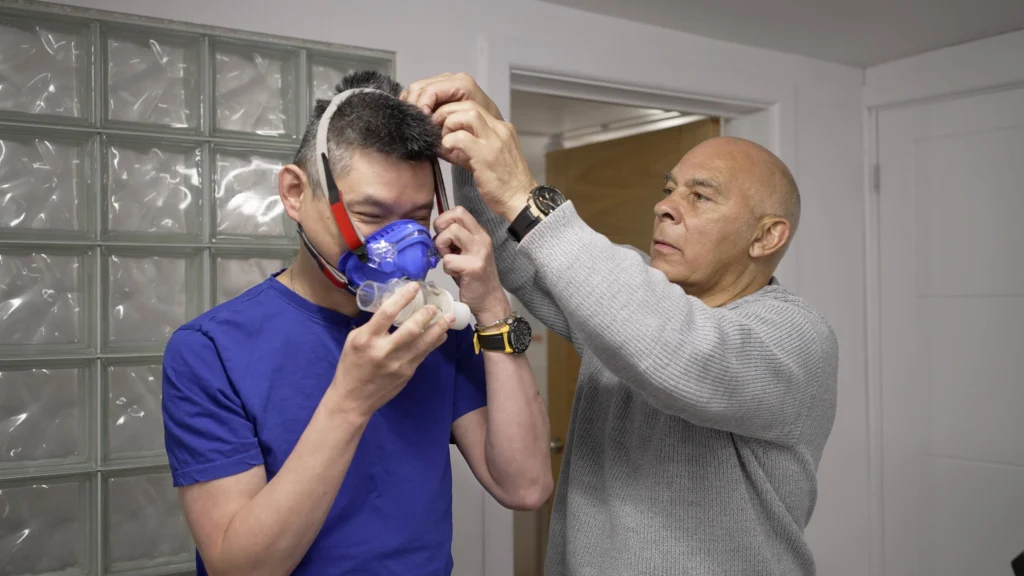
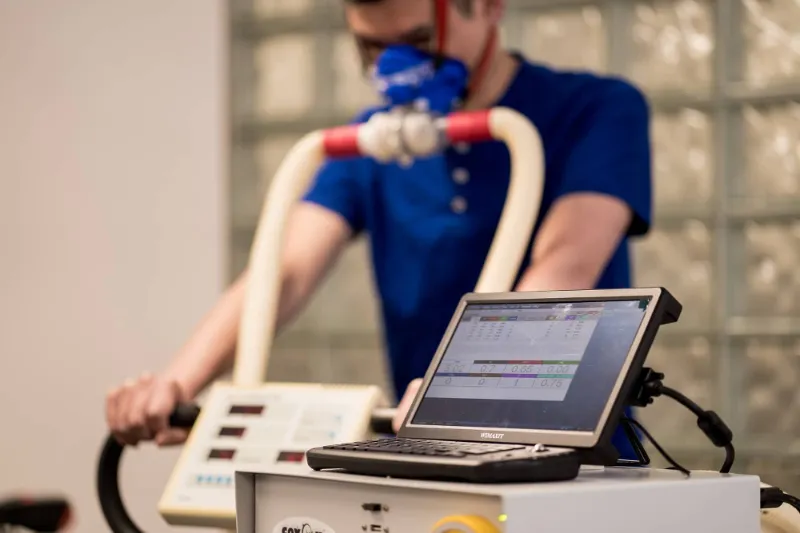
Why Take a VO2 Max Test?
VO₂ Max is a key measure of cardiovascular health, fitness, and longevity. A higher VO₂ Max is linked to a lower risk of heart disease and all-cause mortality. With regular testing and targeted training, significant improvements in efficiency and heart strength can occur in just three months. Our submaximal VO₂ Max test captures the same valuable data with a gentler approach, making it a safer, effective option, unlike maximal testing which pushes you to your limit.
The Benefits
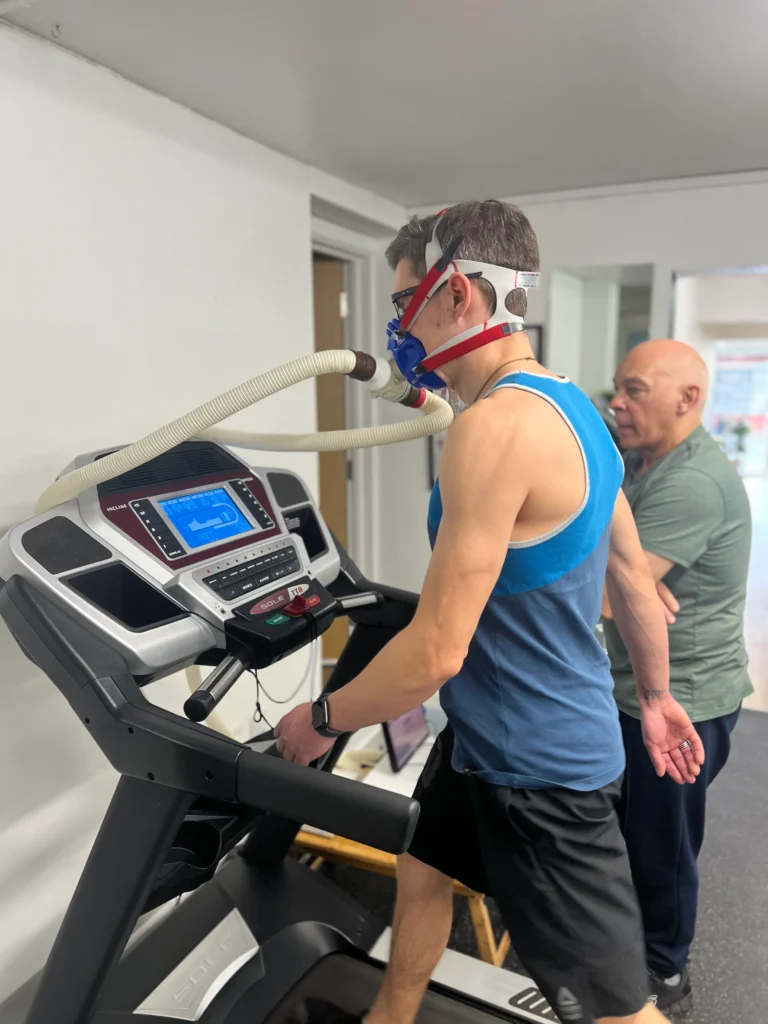
Health and Longevity
Moving from a ‘low’ VO2 Max category to ‘below average’ is associated with a 50% reduction in all-cause mortality, and reaching ‘above average’ can reduce it by nearly 70%!
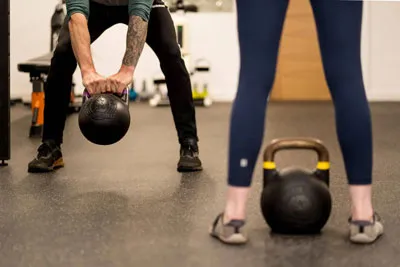
Optimise training and performance
The test provides personalised training zones: heart rate, pace and power zones. This allows individualised workouts for specific goals. And ensures efficient training while preventing overtraining by ensuring training aligns with your physiological capacity.
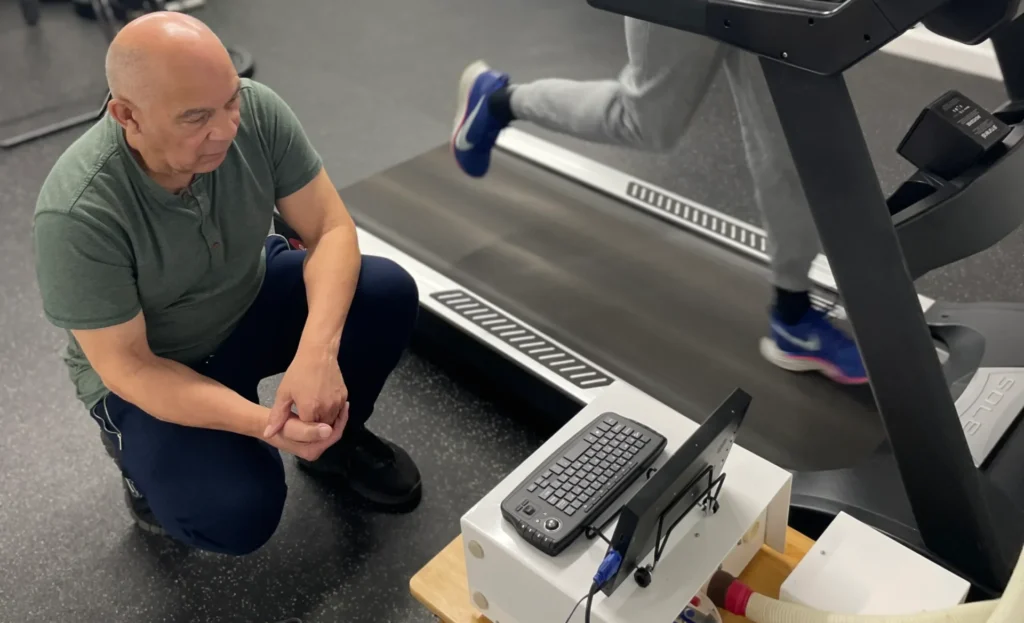
Progress Tracking:
Re-testing after 4-8 weeks of targeted training provides insights into your progress by comparing data on ventilation, VO2, and heart rate, giving a clear picture of your fitness improvements. Regular VO2 Max testing supports sustainable effective fitness development and ensures training adaptations.
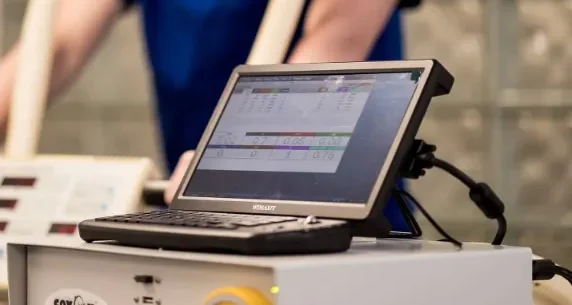
Data driven fitness
VO2 Max testing provides significantly more accurate and reliable health and fitness data compared to smart watches. It uses direct physiological measurements rather than predicted estimated algorithms. Highly accurate, validated and repeatable data allows informed decisions about training, nutrition and overall fitness strategy.
But I’m not an athlete is the test for me?
Our submaximal test stops at around 85% of your maximum heart rate, giving us the data we need without pushing you to the brink. If your exact maximum heart rate isn’t known, we use a Rating of Perceived Exertion (RPE) scale to determine the end of the test, ensuring accurate yet comfortable results for a personalised training plan.
Research indicates that 150 minutes of moderate-to-vigorous aerobic activity per week lowers the risk of chronic diseases and mortality. Even small increases in physical activity can yield substantial health benefits. This makes regular exercise and fitness tracking vital for optimal health. A high VO2 Max and regular physical activity are associated with lower risks for hypertension, diabetes, stroke, cardiovascular disease, and certain cancers. VO2 Max reflects the function of your heart, lungs, blood vessels, muscles, and nervous system, providing a comprehensive snapshot of your overall health.
Clive Williams
Clive is a metabolic analyst with more than 30 years experience in metabolic and respiratory function, specialising in how the body responds and adapts to physical activity and exercise. Clive has worked with various Fire & Rescue and Police services over the years, providing gold standard cardiovascular fitness assessments.
As well as being experienced in working with athletes and high-level performers, Clive has a particular passion in helping everyday people improve their health and fitness, making the test accessible and inclusive to everyone.
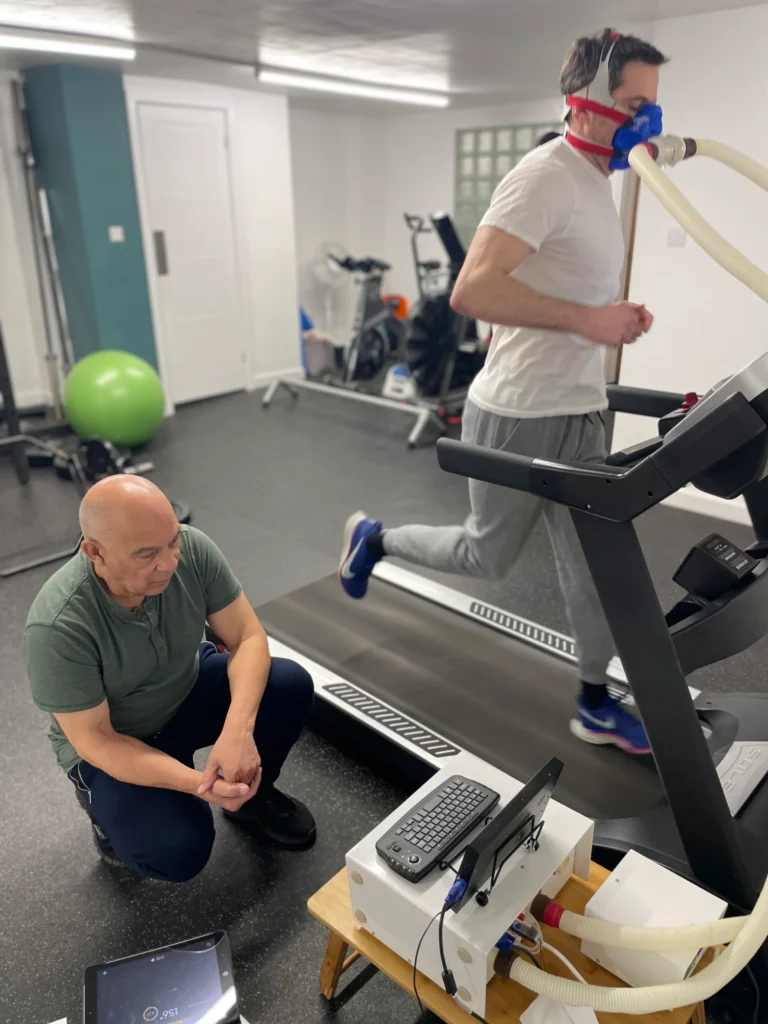

Frequently Asked Questions about V02 Max testing
What should I expect during a V02 Max test?
- Preparation: Arrive ready to work at a relatively high intensity.
- Mask Fitting: We’ll fit a mask over your face to capture and analyse your breath.
- Exercise Session: You’ll exercise on a treadmill or stationary bike with increasing intensity until we gather sufficient data.
- Cool Down and Review: After the test, we’ll guide you through a cool-down and discuss your results with you.
What will I receive?
At the end of your test, we’ll provide a detailed report that includes:
- VO2 Max Score: An indicator of your body’s oxygen use and cardiovascular fitness.
- Energy Source Analysis: See the mix of carbohydrates and fat your body uses at different intensities to help optimise your training.
How long will the test take?
The VO2 Max test takes about 20 minutes, with time needed for setup, mask fitting, and health screening. The entire appointment, including result review, lasts about one hour.
What equipment will I use?
Choose between a treadmill or stationary bike for your test. We’ll provide a mask to capture and analyse exhaled air for precise results.
What Insights will the test provide?
Ventilatory Thresholds: Identifying ventilatory thresholds helps establish training zones. Knowing an accurate Zone 2 intensity (up to the first ventilatory threshold, VT1) is crucial for building health and endurance, while VT2 is essential for competition-specific intensities for endurance athletes.
Breathing and Respiratory Efficiency: By analysing your breathing at 85% of capacity, we can assess respiratory efficiency, strength, and endurance. This allows for targeted training interventions if respiratory performance is a limiting factor.
How often do I need to re-test?
This depends on your individual circumstance and goals. But as a guide we recommend re-testing after 4-8 weeks of targeted training. This will provide insights into your progress by comparing data on ventilation, VO2 and heart rate, giving a clear picture of your fitness improvements. We can then adapt and tailor your programme to make it more concise to you.
